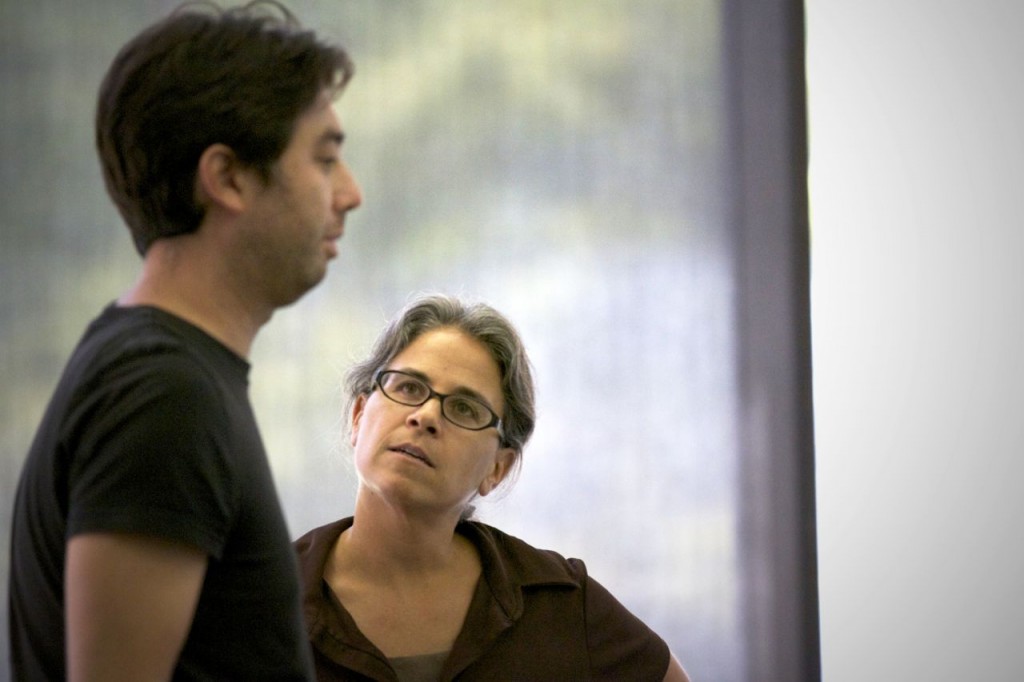
The Fine Arts Library (FAL) is a spectacular space on campus. In the last several years, the Roberts Reading Room has been used for a plethora of visual and performing arts activities. Concerts, lectures, film screenings, exhibition opening receptions. But of late, the space has become even more activated as artists and playwrights seek out the space as an element of their creation. Both the setting and the physical objects are active partners in the artistic output.
This fall artist David Horvitz requested to have his seminar with the faculty and students in the Fine Arts Library. When asked why David wanted to have his seminar in the FAL he says, “I make a lot of artist books and multiples and ephemera. I’ve been doing this for years. And throughout the years I started using the site of the library for various projects, such as the Drugstore and Cigarette Beetle projects. And so there were two reasons to do the event in the library. One was specific to the fact that I just sent in a Cigarette Beetle to the library, so I could see how it arrived, and how it would be received and entered into the library’s collection. But also in general of my affinity towards libraries and books.”
The faculty who invited him to campus, Kristin Lucas, was keen on the idea. “David interacts with systems of circulation and exchange in his art practice. How a system such as a library works and what David enters into circulation through a system are of equal importance to the understanding of his work. By situating David’s seminar in the Fine Arts Library, we intended to activate the library as a site for art. Ceremonializing the cataloging process of David’s donations was a way to visualize and consider the life of the work within this very social and accessible system of circulation that we are all familiar with using as a personal resource but that most of us have very little understanding of in terms of its procedures, complexity, and cultural value. It was also a way to show how David gives over a certain amount of control in the life of his artwork through the systems he engages, and that these systems take on a certain amount of responsibility in giving life to his work and potentially changing it over time.”
David is a performance artist who has an interest in mail art. His practice is participatory. He collaborates with other artists, librarians, as well as a web-based audience. He is interested in circulation systems such as those set up in libraries. “Taking advantage of diverse systems of circulation, he gathers and disperses images and objects through media such as the internet, the postal system, libraries, and airport lost and found services.”
As we move deeper into the 21st century, people are finally recognizing that Libraries can be so much more than a place where books are housed or a place to study. Libraries have always been community centers. This notion is experiencing a Renaissance. Libraries are becoming active spaces that are sought out by community members for a variety of purposes.
So what is next for the Fine Arts Library? In the Spring, the FAL will be a venue for a play that is part of the Cohen New Works Festival. The play is about libraries. More on that from my next post.
